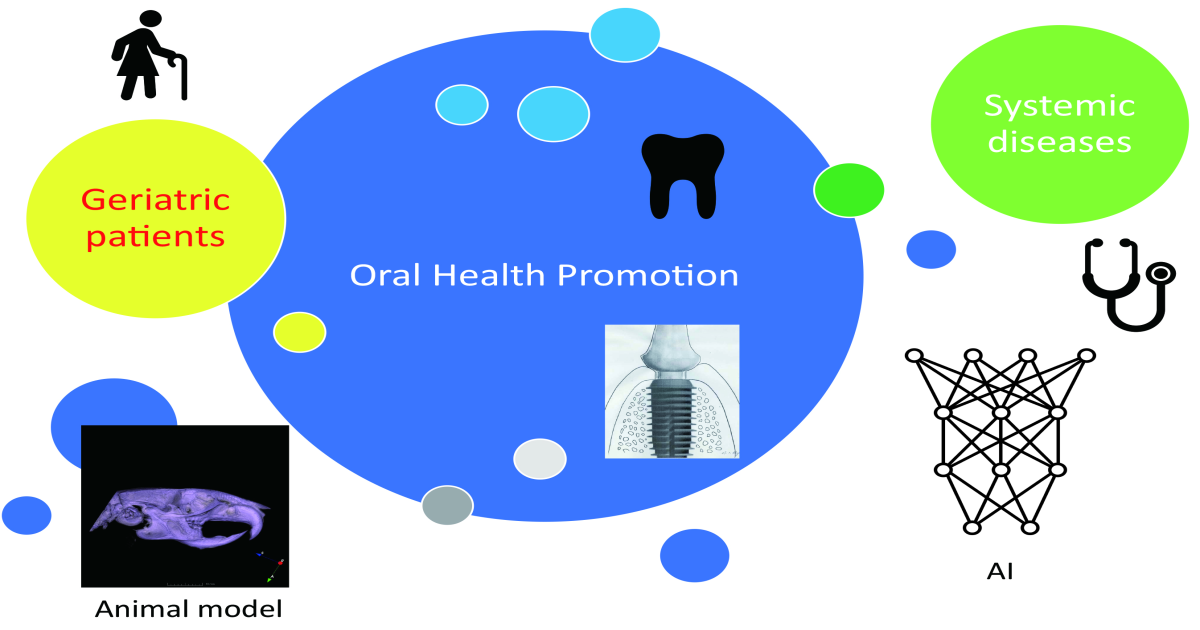Advanced Clinical Technology for Oral Health Promotion
A special issue of Applied Sciences (ISSN 2076-3417). This special issue belongs to the section "Applied Biosciences and Bioengineering".
Deadline for manuscript submissions: 31 December 2024 | Viewed by 3933

Special Issue Editor
Interests: tissue engineering
Special Issues, Collections and Topics in MDPI journals
Special Issue Information
Dear Colleagues,
This Special Issue, titled "Advanced Clinical Technology for Oral Health Promotion", addresses the growing need for specialized oral healthcare in an aging global population. Focusing on elderly patients, it explores innovative clinical technologies and methods to enhance oral health. These include advancements in dental implant technology tailored to the elderly, considering challenges such as bone density variations and heightened disease susceptibility. Additionally, this Special Issue examines the relationship between systemic conditions, such as diabetes and osteoporosis, and oral health, proposing new strategies and technologies for effective management. Emphasizing preventive care and education, this Special Issue presents novel tools and approaches for maintaining oral hygiene and preventing dental problems in older adults. Featuring real-world case studies and clinical trial reports, this Special Issue is a vital resource for dental professionals, researchers, and healthcare providers. It aims to offer fresh perspectives and solutions for improving oral health in the elderly, thereby contributing significantly to geriatric dentistry and enhancing quality of life for this demographic.
Prof. Dr. Seong-Gon Kim
Guest Editor
Manuscript Submission Information
Manuscripts should be submitted online at www.mdpi.com by registering and logging in to this website. Once you are registered, click here to go to the submission form. Manuscripts can be submitted until the deadline. All submissions that pass pre-check are peer-reviewed. Accepted papers will be published continuously in the journal (as soon as accepted) and will be listed together on the special issue website. Research articles, review articles as well as short communications are invited. For planned papers, a title and short abstract (about 100 words) can be sent to the Editorial Office for announcement on this website.
Submitted manuscripts should not have been published previously, nor be under consideration for publication elsewhere (except conference proceedings papers). All manuscripts are thoroughly refereed through a single-blind peer-review process. A guide for authors and other relevant information for submission of manuscripts is available on the Instructions for Authors page. Applied Sciences is an international peer-reviewed open access semimonthly journal published by MDPI.
Please visit the Instructions for Authors page before submitting a manuscript. The Article Processing Charge (APC) for publication in this open access journal is 2400 CHF (Swiss Francs). Submitted papers should be well formatted and use good English. Authors may use MDPI's English editing service prior to publication or during author revisions.
Keywords
- geriatric dentistry
- dental implant technology
- diabetes and oral care
- osteoporosis and dental health
- dental care innovations
- case studies in geriatric dentistry
- preventive oral care
- dental rehabilitation
Benefits of Publishing in a Special Issue
- Ease of navigation: Grouping papers by topic helps scholars navigate broad scope journals more efficiently.
- Greater discoverability: Special Issues support the reach and impact of scientific research. Articles in Special Issues are more discoverable and cited more frequently.
- Expansion of research network: Special Issues facilitate connections among authors, fostering scientific collaborations.
- External promotion: Articles in Special Issues are often promoted through the journal's social media, increasing their visibility.
- e-Book format: Special Issues with more than 10 articles can be published as dedicated e-books, ensuring wide and rapid dissemination.
Further information on MDPI's Special Issue polices can be found here.





